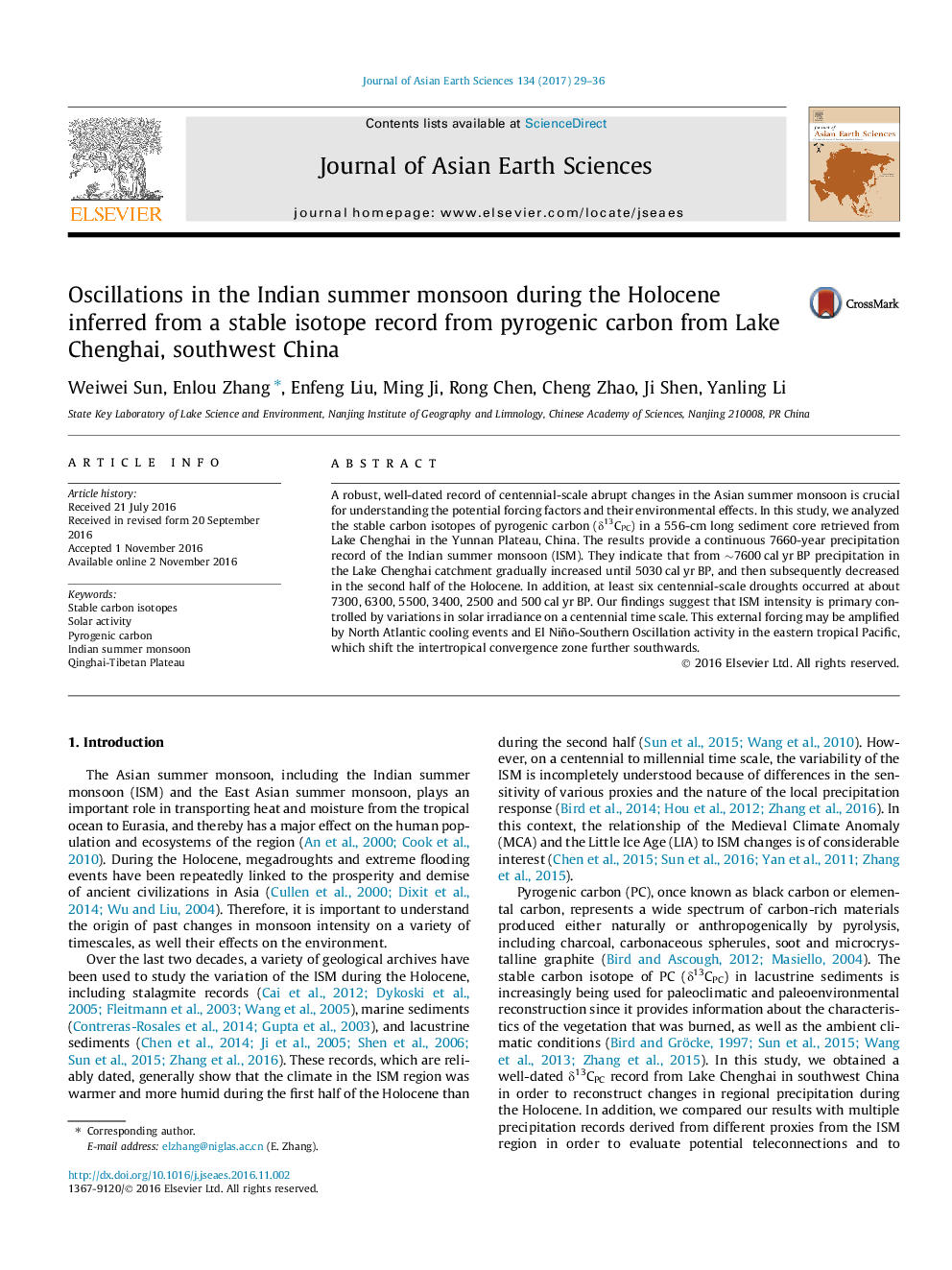| Article ID | Journal | Published Year | Pages | File Type |
|---|---|---|---|---|
| 5786168 | Journal of Asian Earth Sciences | 2017 | 8 Pages |
Abstract
A robust, well-dated record of centennial-scale abrupt changes in the Asian summer monsoon is crucial for understanding the potential forcing factors and their environmental effects. In this study, we analyzed the stable carbon isotopes of pyrogenic carbon (δ13CPC) in a 556-cm long sediment core retrieved from Lake Chenghai in the Yunnan Plateau, China. The results provide a continuous 7660-year precipitation record of the Indian summer monsoon (ISM). They indicate that from â¼7600 cal yr BP precipitation in the Lake Chenghai catchment gradually increased until 5030 cal yr BP, and then subsequently decreased in the second half of the Holocene. In addition, at least six centennial-scale droughts occurred at about 7300, 6300, 5500, 3400, 2500 and 500 cal yr BP. Our findings suggest that ISM intensity is primary controlled by variations in solar irradiance on a centennial time scale. This external forcing may be amplified by North Atlantic cooling events and El Niño-Southern Oscillation activity in the eastern tropical Pacific, which shift the intertropical convergence zone further southwards.
Keywords
Related Topics
Physical Sciences and Engineering
Earth and Planetary Sciences
Geology
Authors
Weiwei Sun, Enlou Zhang, Enfeng Liu, Ming Ji, Rong Chen, Cheng Zhao, Ji Shen, Yanling Li,
